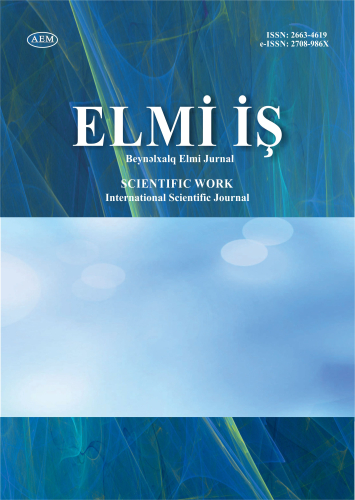Arxiv
2024 Kubra Muxtar Aliyeva
ANAS Institute of Art and Architecture
aliyeva_kubra@mail.ru
TEMPLE SCULPTURES OF MANNA MAGUS AND THEIR PICTURING IN
TABRIZ CARPETS OF XIX CENTURY
Summary
In the article one unique carpet from personal collection kept in Goris (Southern Azerbaijan) is studied. That carpet is known by the name “Seven planets”. The carpet was woven in 1880 and according character of figures, pictured on it, it’s author was amateur carpet-maker. Uniqueness of that carpet is explained by it’s content aspect. It should be also pointed, that in special literature such samples aren’t mentioned. In the centre of carpet rectangular medallion is placed, and it’s border isn’t very wide, it consists of three stripes. In that medallion warm, light-brown colour transforms into dark-brown one (here abrash is seen). In the medallion pictures of seven planets are placed. These planets are symbols of heavenly stars. In the centre of medallion the Sun is pictured. (Arabian inscriptions with names of planets are connected with different anthropomorphous figures. These inscriptions are placed side by side, on the background of four paddle medallions of yellow colour. These medallions are outlined by yellow contour line).
All other figures are placed around the Sun. Two of them are placed in upper part, two of them are placed in bottom of medallion, and the rest four stars are on the right and on the left side of Sun. So, the placing of figures – symbols of planets- repeats the scheme of planets placing in the sky.Basing on this fact, we can say with confidence, that ancient inhabitant of Azerbaijan, studied the sky and had own, may be primitive imaginations about planets. Zoroaster himself was considered a Zoroastrian prophet and was scientist- astrologer, knew the stars and sky.
That’s the reason, that for ancient Greeks the name Zoroaster was associated with notion “astron”- star. So, in ancient sources Zoroaster is described as wise astrologer, the doctrine, founded by him is named Zoroastrism. The analyses of that carpet and some ceramics, architectural buildings and sculptures prove that the inhabitant of Manna state worshipped celestial planets and later Zoroastrism and other religions, existed in this territory was based on the most ancient religious imaginations of ancient Azerbaijanis.
Keywords: sculpture, temple, Manna, Magus, seven planets, Nizami Ganjevi
MƏQALƏNİ YÜKLƏ
[1.21 Mb] (yüklənib: 57)
Baxış:
813

